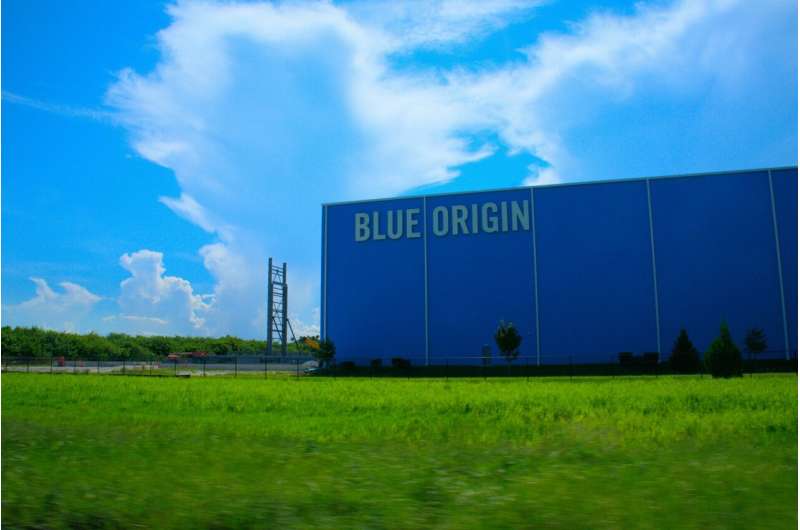Blue Origin operates its own crane.
Launches for New Glenn will take place from nearby Cape Canaveral Space Force Station's Launch Complex 36, and pieces have been moving to get to that first liftoff before the end of the year.
Blue Origin CEO Dave Limp said a full recovery rehearsal with the landing vessel would be coming soon.
The New Glenn first-stage boosters will be 189 feet tall compared to the SpaceX boosters at about 135 feet.
The entirety of the New Glenn rocket will rise to 322 feet when it launches using seven of Blue Origin's BE-4 engines to give it nearly 3.9 million pounds of thrust at liftoff.
Blue Origin this summer switched over its engine production to support New Glenn after pumping out enough BE-4 engines to its customer United Launch Alliance to support the remaining Vulcan Centaur launches ULA has on its 2024 manifest. Vulcan rockets only use two BE-4 engines.
When it does finally fly, and if it can stick the landing, New Glenn boosters are designed for at least 25 reflights.
The first mission could be to fly two Mars-bound satellites for NASA for its Escape and Plasma Acceleration and Dynamics Explorers (ESCAPADE) mission. The satellites have been constructed over the last three years for UC Berkely by Rocket Lab, and will measure plasma and magnetic fields around Mars.
NASA is also relying on New Glenn to get Blue Origin's Blue Moon lunar lander to the moon to support future Artemis missions.
And Blue Origin also has a heavy manifest for commercial customers, including several flights for Bezos' Amazon and its Project Kuiper satellites.
Construction on the rockets continues at the Blue Origin factory next door to Kennedy Space Center Visitor's Complex on Merritt Island.
The company has large enough facilities at Cape Canaveral to process three New Glenn rockets at once. Blue Origin took over the lease for LC-36 in 2015, investing about $1 billion in the pad site alone. It was previously used for government launches from 1962–2005, including lunar lander Surveyor 1 in 1967 and some of the Mariner probes.
When launches finally do occur, the first-stage booster will land about 620 miles downrange in the Atlantic on a landing platform, after which it will make its way back to Port Canaveral where Blue Origin's new crane will be waiting to start the launch process all over again.
2024 Orlando Sentinel. Distributed by Tribune Content Agency, LLC.



